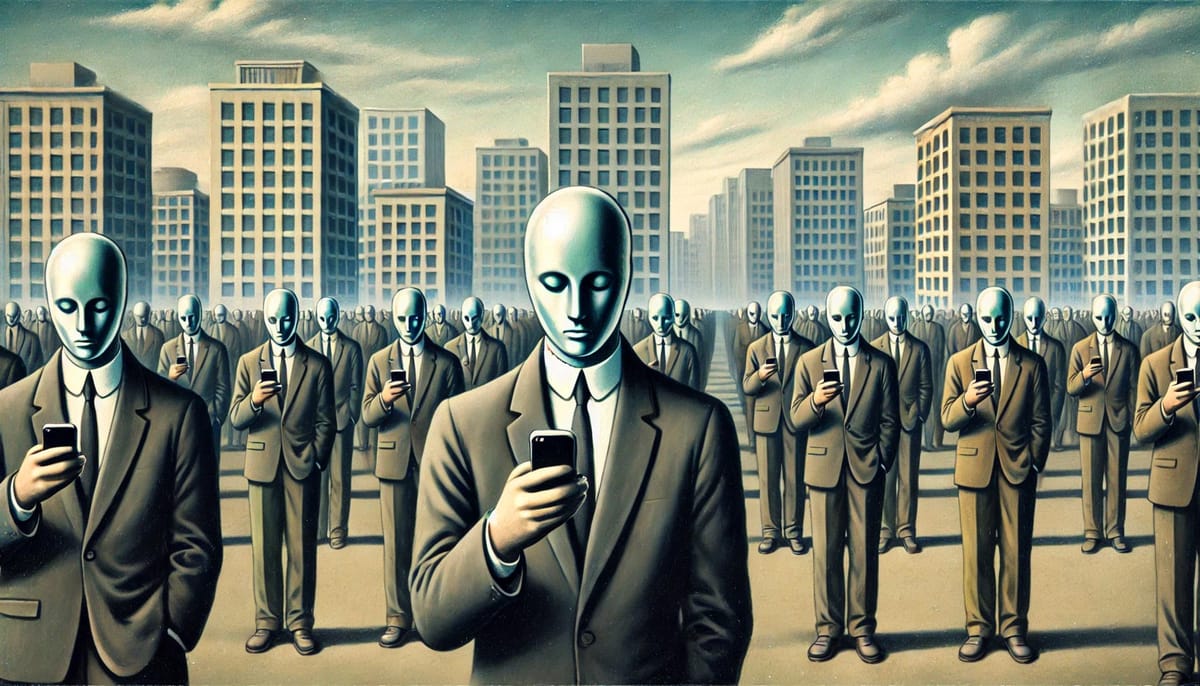The Personalization Paradox: Why Automated Authenticity is Killing Your Brand
The promise of AI-driven personalization is huge. But brands are stumbling into a precarious paradox: The more they lean into it, the less they stand out.

In 1967, marketing pioneer Lester Wunderman introduced the world to “direct marketing” with a vision of personalized outreach tailored to the individual interests and behaviors of customers. It was cutting-edge, and it triggered a seismic shift in how brands communicated with their audiences. Fast-forward to today, and we see the idea of personalization stretched to its absolute limit—automated email campaigns, AI-powered product recommendations, hyper-targeted social media ads. On the surface, this should be the golden age of marketing. And yet, many brands are stumbling into a precarious paradox: The more they lean on AI-driven personalization, the more homogenized they become.
We're entering an era where AI is expected to solve all our marketing woes. Collect enough data, train your model, and voilà: you’ll supposedly deliver the right message to the right person at the right time. However, something curious happens when every company is using the same toolkit. Despite the outward appearances of “personalization,” messaging starts to blur into one bland, predictable voice.
Why? Because most AI algorithms are only as unique as the data fed into them. And in many industries, that data isn’t particularly distinct: similar demographics, analogous purchasing patterns, parallel brand aspirations. The result is a conventional wisdom that becomes self-reinforcing. AI spits out template-like recommendations that feel generic—even if they arrive in your inbox with your name at the top.
For a brief period, personalization was a remarkable differentiator. If you were among the first to automate a tailored experience—offering just the right pair of shoes to a customer who recently browsed athletic apparel—your brand felt prescient, even a bit magical.
But now, personalization at scale is no longer a novelty; it’s a commodity. As soon as personalization became the standard playbook, it lost its power to surprise and delight. Instead, it became table stakes—a chore that brands feel obliged to handle rather than a living, breathing form of communication. And when everyone is doing it, the question stops being “Can you personalize?” and becomes “How do you stand out once everything is personalized?”
Moreover, the ease of deploying AI-driven personalization can lull brands into a false sense of security. Executives may assume, “Well, we’re sending out 100 million customized messages a month. We must be connecting with our audience.” But if those messages are only superficially personalized—relying on name placeholders and cookie-cutter content—what real connection are they forming?
Worse yet, businesses risk abdicating their voice to the machine. The brand tone, the distinct message, and the intangible spark that resonates with customers start to get lost in a sea of algorithmic predictions. Instead of capturing attention, these messages can fade into the background noise of inboxes and feeds, resembling every other brand’s AI-driven marketing.
This crisis in authenticity reminds me of how certain corners of the music industry have suffered from data-driven formulas. When record labels discovered that certain chord progressions or beat patterns consistently made hits, they churned out dozens of near-identical songs. While those hits initially soared, audiences began to tune out. Listeners didn’t just want the same catchy formula repeated ad nauseam—they craved novelty, risk, and the indelible mark of human creativity. Authenticity, it turns out, is never merely about sticking to a recipe; it’s about forging connections through curiosity, wonder, and yes—even a touch of imperfection.
In the same way, brand marketing can fall into the trap of repeating a tested, algorithmic “hit.” That approach might generate decent short-term results, but it runs the risk of losing the spark that makes a brand distinct—and worth following—over the long haul.
But does this mean AI is the culprit, guilty of unraveling marketing authenticity? Not exactly. Blaming AI alone is like criticizing a hammer for hitting the wrong nail. It’s not the tool itself but how we use it that matters.
Data-driven personalization becomes a problem when it’s treated as an end rather than a means. The smart way forward is to use AI not to replicate your brand voice but to amplify the elements that make you uniquely human.
My advice?
Start with Story, Not Segments
Before unleashing AI on your marketing pipeline, define your brand’s fundamental narrative. What is the story you want to tell? How does it speak to the universal human truths in your industry? When you begin with story, you ensure your marketing is rooted in a brand ethos, not just a data point.
Use AI for Insights, Not Scripts
Instead of delegating creative decisions to algorithms, let AI do what it does best—analyze data, detect patterns, and surface insights that might elude the naked eye. But maintain human oversight when crafting the final message. The last mile of communication should be where human intuition, empathy, and wit prevail.
Explore Imperfections
In an era of digital polish, sometimes it’s the rough edges that resonate. A witty aside. A flawed anecdote. An unscripted moment in a video campaign. Consumers are more sophisticated than we give them credit for; they crave genuine experiences over sanitized ones. Encourage your marketing teams to be playful and spontaneous where it fits your brand.
Build Feedback Loops
One of AI’s greatest strengths is its ability to learn. But it can only learn from meaningful feedback. If you rely on automated metrics like open rates and click-throughs, you’re not getting the full picture. Develop ways to assess whether your communications “feel” authentic. Qualitative feedback—focus groups, direct conversations, community interactions—can prevent your AI from spiraling into bland uniformity.
Celebrate Diversity and Serendipity
Personalization at scale often aims to eliminate guesswork and produce consistent outcomes. Yet, real human interactions are unavoidably messy. Sometimes the best opportunities lie in accidents, misunderstandings, or chance discoveries. Consider how your AI might incorporate randomness or exploration rather than laser-focused targeting alone.
True personalization isn’t about sprinkling automated authenticity throughout your emails. It’s a conversation that evolves over time, anchored in real empathy for your audience. But as AI accelerates, everyone will be tempted to follow the same playbook, resulting in a market flooded with polished yet soulless content. The brands that will thrive are those bold enough to reject the comfort of sameness and embrace the discomfort of being different. Now is the moment to lean into what makes your brand human—to tell stories only you can tell and build connections only you can forge. Because in the AI era, authenticity is the ultimate competitive advantage.






